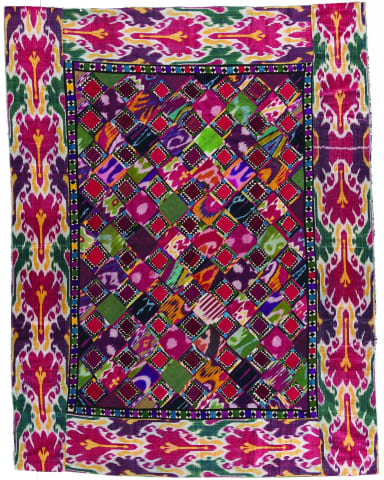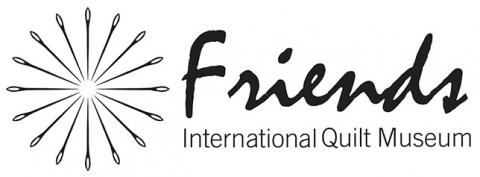Patchwork (kurak) wall hanging
Patchwork (kurak) wall hanging
Made in Uzbekistan
Late 19th Century
2015.058.0006
Kurak and kurama are the Turkic words most Central Asians use for patchwork. Some scholars believe people have made kurak for over a millennium. Others tie its history to the nineteenth-century expansion of trade with Russia, which brought new materials to the region.
Regardless of its beginnings, the primary role of patchwork in Central Asia has always been as a protective charm used by brides, new mothers, and children to guard against sorcery, sickness, and evil spirits. Triangular fabric amulets (tumar or doga) attached to clothing and animal trappings were believed to appease supernatural elements, protect against harm, and keep the mystical forces of nature in harmony. The repeating triangles commonly found in Central Asian patchwork served a similar purpose, scaring off the "evil eye" and other bad thoughts and intentions.
Interestingly, the small, black repeating triangles on this patchwork wall hanging--which look like the "Flying Geese" of traditional American quilts--are actually formed with tiny cross stitches.
This piece is featured in Sacred Scraps: Quilt and Patchwork Traditions of Central Asia, which is on display at the International Quilt Museum May 12-October 15, 2017.
















